PRESERVING A MILITARY LEGACY FOR FUTURE GENERATIONS
The following Reflections represents ETC Julius Marold’s legacy of his military service from 1964 to 1985. If you are a Veteran, consider preserving a record of your own military service, including your memories and photographs, on Togetherweserved.com (TWS), the leading archive of living military history. The following Service Reflections is an easy-to-complete self-interview, located on your TWS Military Service Page, which enables you to remember key people and events from your military service and the impact they made on your life. Start recording your own Military Memories HERE.
Please describe who or what influenced your decision to join the Navy.

As a child, I had always had an interest in the Navy. My parents had been in the Army during WWII, so they couldn’t understand why I was so fascinated by all things Navy. My favorite TV shows were Silent Service, Men of Annapolis, Navy Log, Victory at Sea, and McHale’s Navy. I had a stack of paperback books about the Navy. I liked the idea of going into submarines, but my vision wasn’t good enough. After registering for the draft in 1964, my next stop was the Navy Recruiting Office in Babylon, New York. He wasn’t in, so I went to the one in Hempstead. The SMC in charge was in, so I signed up with him, and at the end of September, I was off to Great Lakes RTC.
Whether you were in the service for several years or as a career, please describe the direction or path you took. What was your reason for leaving?

I served from September 1964 through 1985 with one year of broken service, a total of twenty years, two months, and twenty-nine days. My last duty station was at Mobile Technical Unit (MOTU) 7 in Yokosuka, Japan. I did a three-year tour with three one-year extensions. It was the most satisfying job I’d ever had, and it counted as sea duty (we spent most of our time on ships). So when the detailer told me I had to go ashore and offered me duty pushing boots in Orlando or teaching C school in San Diego, I knew it was time to put in my papers.
If you participated in any military operations, including combat, humanitarian and peacekeeping operations, please describe those which made a lasting impact on you and, if life-changing, in what way?

My first ship was a WWII-era SUMNER class destroyer – USS MANSFIELD (DD-728), homeported in Yokosuka, Japan. We spent most of our time off the coast of Vietnam on fire missions. From the time I reported on board on January 1st, 1966, until the ship returned to Long Beach in 1968, providing NGFS in Vietnam was about all we did. We shot at them with our six 5-inch 38s, and they shot at us with everything they had. Of the hundreds of rounds they fired at us, only one hit. We were pretty lucky, but that was still one too many.
You grow up pretty fast when you realize your job is to try and kill people, and their job is to try and kill you. Later (1971), as a First Class ET on USS CLEVELAND (LPD-7), we tied up to the pier in Danang. The command wouldn’t let us off the ship, so some of us (not too wisely) sat upon the signal bridge and watched the incoming rockets, mortars, and outgoing artillery. The VC were outside the perimeter, which was pretty far from the ship, so we weren’t really in any danger, but looking back, it was probably a good thing the command didn’t let us off the ship.
Did you encounter any situation during your military service when you believed there was a possibility you might not survive? If so, please describe what happened and what was the outcome.

I never felt threatened all that much, but after MANSFIELD was hit near Dong Hoi and MM2 Archer was killed, I “grew up.” The shell exploded about twenty feet forward of the ET shop where I had been sitting reading “All Hands” about the FORESTALL fire when I heard the explosion. It wasn’t loud, and the ship rocked in a way that it had never rocked before while I was on board. I opened the door, looked out, and saw a big cloud of black smoke coming my way. I closed the door and got under the vent that was still working. I had read about the sailors on the FORESTALL suffocating, and I didn’t plan to suffer the same fate.
The scariest event, though, was when I was in CIC sitting on the WLR-1 ECM watch. We had been on a fire mission and had started steaming away from the shore. I was listening on the sound-powered phones. “Bridge Sonar, underwater explosion 200 yards dead astern.” The ship started vibrating as we went to flank speed. “Bridge Sonar, underwater explosion 100 yards dead astern”. The shelf the WLR-1 was mounted on was quarter-inch steel, a good place to crawl under. “Bridge Sonar, underwater explosion 50 yards dead astern”. They were walking right up our wake. “Bridge Sonar, underwater explosion 50 yards dead ahead”. They had us bracketed. I looked up at the overhead in CIC, which was the deck for the Signal Bridge, expecting to see the next shell puncture through. That was the last report from Sonar. Either they lost the one that went over us, or we managed to get out of range, but we got out of that one by the skin of our teeth. Later, I gave RD1 a bad time about hiding under the shelf. That was MY hiding place. Fortunately, neither one of us ever needed it again.
Of all your duty stations or assignments, which one do you have fondest memories of and why? Which was your least favorite?
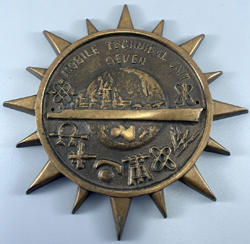
My fondest duty station has to be MOTU-7. The job satisfaction there was incredible. My job officially, as a Chief Electronics Technician, was to train shipboard technicians in operating and maintaining their equipment. My specialties were communications and navigation equipment. When a casualty report (CASREP) requesting a tech assist was received, I would have to fly to the ship wherever the ship was in WESTPAC, the Indian Ocean, or the Persian Gulf. Once on board, I would help the Tech troubleshoot and repair his (no “her” on board back then) gear. The job satisfaction came from seeing the equipment work the way it should and knowing the Tech would be able to conduct repairs himself the next time it failed.
My least favorite was the COMMSTA Hono. It was a nice enough duty station if you wanted shore duty (I didn’t), but my job was conducting quality checks of inter-ocean cables. If a particular circuit had a problem, my job was to tell someone else what the problem was, and they would fix it. I wanted to do the fixing. I did manage to get a lot of colleges in during that time, though.
From your entire military service, describe any memories you still reflect back on to this day.
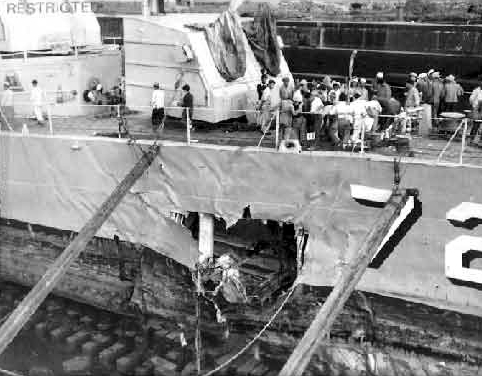
Two memories stand out. When MANSFIELD was hit near Dong Hoi, I was in the ET shop just aft of the athwart ship’s passageway. We were hit just forward of that passageway. A large number of cables were cut, and some of them were hot (high voltage). I figured I had to get up to radio, so I went around the main deck port side and back in near the Wardroom, which was the battle dressing station. Just before going up the ladder to the radio, I saw a bloody boondocker footprint on the tile at the foot of the ladder. One of our shipmates had caught a piece of shrapnel in his chest. Others had been wounded, but his wound was fatal.
The second memory occurred during the same incident. I was back in the ET Shop, standing in the doorway talking to some of the guys who had gotten the wounded into the Wardroom. One of the guys was doing something with his hand, and as I looked down, I realized he was rolling a piece of skin from one of the wounded around between his thumb and forefinger. He looked down simultaneously, and when he realized what he was doing, he ran off to the handrail on the port side.
At that time, I wasn’t feeling too stable either.
Another time, MANSFIELD had been patrolling around the DMZ. Our Radarmen spotted a relatively large target north of the DMZ during the night and moving north. We usually looked for WBLCs (Water Born Logistic Craft), which painted a small target on the radar scope. This target was much larger. When it got light enough to see, we moved in to discover a WWII-era LST moving north and flying an American flag. It was LST-1067. The RDs looked it up and found its calling was “Page Boy Hotel.” They started calling on the usual frequencies but got no response. Finally, we went in with “signals in the air” (flags), saying, “You are standing in danger; follow me.” They did. The Captain sent a boarding party to the ship to find out what was happening. The OPS officer, LT York, was put in charge. I was selected to be the party’s radioman and given a PRC-10 backpack radio (which I maintained). We noticed that the LST’s radar antenna wasn’t turning, so besides maintaining comms with MANSFIELD, I could look at their radar and maybe get it back online. We went over in the motor whaleboat, and as we climbed up the side, we saw several U.S. Army personnel asking what was going on. I told them they weren’t where they were supposed to be but didn’t want to elaborate.
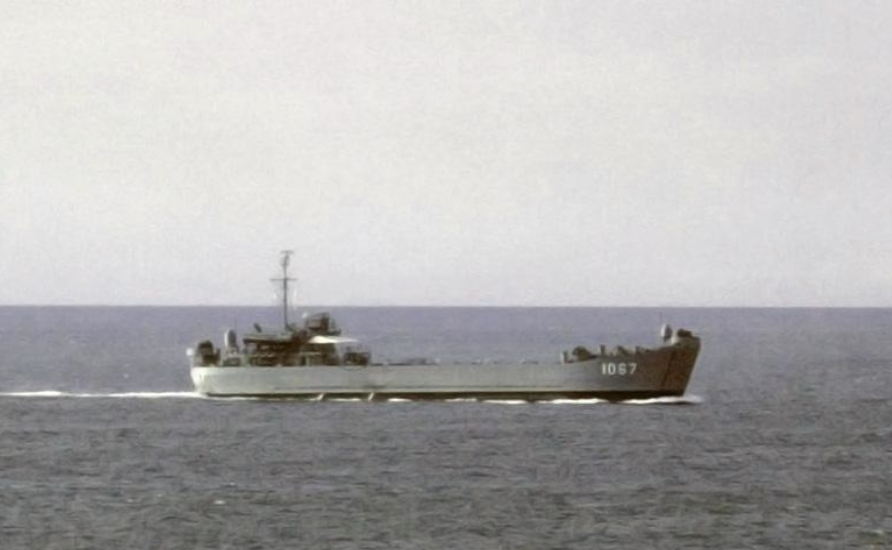
We went up to the LST’s bridge and were met by the Korean crew operating the ship. They gave us a cup of Korean Chickory coffee (we got pretty wet going over there). That coffee would grow hair on the bottom of your feet, and it was strong! LT York and the ship’s Captain laid out charts and pointed out where they were. There are two similar river inlets, one north and one south of the DMZ. During the night, without radar, they had missed the proper inlet south and were heading to the one north! We got them out of there just in time. Their radar was so ancient that I couldn’t do anything within the short time we’d be there, so I looked for their radio. They had what appeared to be a ham radio sitting on a desk and tuned to HF Harbor Common (2716 kcs). No wonder they didn’t answer our calls on UHF. We went back to MANSFIELD and our ration of “medicinal alcohol” (brandy miniatures) and went south.
On September 1st, 1983, The Soviet Air Force destroyed Korean Airlines Flight 007 (KAL007). The aircraft came down near the Russian island of Sakhalin. The U.S. Navy immediately formed Task Force 71 (TF71) to aid and assist in a Search and Rescue (SAR) effort being conducted by South Korean and Japanese ships. The Soviets were doing everything they could to hinder these efforts while denying any complicity in the deaths of 269 passengers and crew. MOTU-7 received a tech assist request from USS CALLAGHAN (DD-994), a KIDD class destroyer, part of TF-71. As a Chief ET assigned to MOTU, I was sent up to TF-71 to assist. I flew to Sapporo in the northern Japanese island of Hokkaido and, from there, to the northern tip of Wakkanai. I was then put on a helo going to the USS WICHITA (AOR-1) part of TF-71 for further transfer to USS CALLAGHAN. A gentleman from the French embassy in Tokyo was with me on the helo. His task was to take charge of the voice and data recorders should they be recovered (they were but by the Russians in October). The SAR mission had been changed to a Search and Salvage (SAS) mission when it became obvious no bodies would be recovered. The focus became the aircraft’s “black box.” I was helo’d over to CALLAGHAN and began my tech assist. Fortunately, it didn’t take long, so I went up to the bridge to watch what was going on. The Soviet fleet was staying on the horizon with two goals: to make sure no ships in TF-71 entered their territorial water and to act as a witness. The Soviets were doing everything they could to hinder any search attempts the ships conducted.
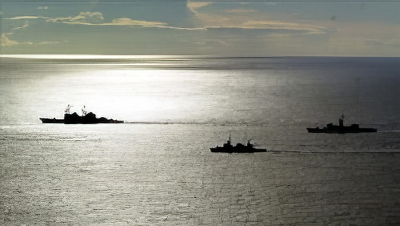
They were also trying to create an “incident” for propaganda purposes. They had several ships that had once been commercial freighters steaming through TF-71, hoping one of our ships would collide with them. These ships were incredibly rusted, and it was hard to believe these things could actually get underway. We were marking the areas searched with buoys when one of these freighters steamed before CALLAGHAN and stopped. Fortunately, CALLAGHAN had excellent ship drivers on the bridge and was able to stop. As the freighter stopped before us, they put a ladder over the side. One of their sailors climbed down the ladder and hooked a cable to the just deployed marker buoy. They then hoisted it up to the blocks and sailed around the fleet, showing it off. While they were in front of us, I noticed that I could see right through the ship through large rust holes in its sides! When you hear a sailor refer to a “rust bucket,” this is what they mean. And the sailors on those things had to be the bravest or most foolish sailors ever put to sea, maybe both. My suggestion to test-fire the CIWS was (wisely) rejected.
What professional achievements are you most proud of from your military career?
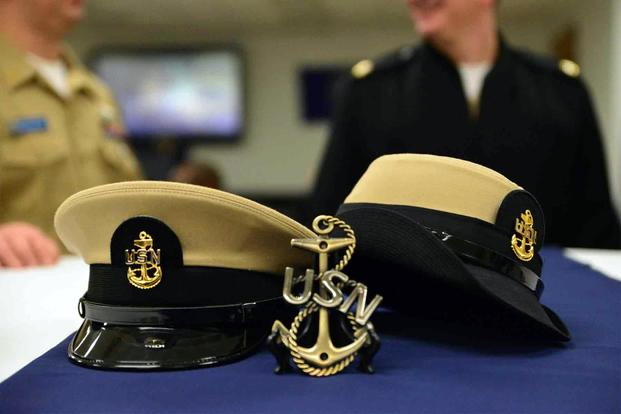
Making Chief has to be one of the proudest moments of my career. Awards such as the Combat Action and Navy Achievement (before it became standard to give a retiree the NAM) and all the Viet Nam ribbons and medals were gratefully and humbly received, but having the CO and techs from the various ships I provided Tech assists too, meet me on the quarterdeck or flight deck as I was departing and shake my hand and thank me for the help and training is right up there with the proudest moments in my career (and after). But perhaps the greatest award I received was a ball cap. I provided tech assistance to USS LEAHY (CG-16) off the coast of Somalia around Christmas time. I got them working and fixed a few other things while we were at sea. An ET3 gave me his ball cap commemorating the LEAHY’s 30th anniversary by way of thanks before I left. I’ve still got that hat. I break it out now and then look at his name on the visor and think back.
Of all the medals, awards, formal presentations and qualification badges you received, or other memorabilia, which one is the most meaningful to you and why?

I’d have to say the Combat Action Ribbon and the Navy Achievement Medal are the two most meaningful awards. The CAR was for our time in and around Vietnam, including one hit from a gun emplacement in Dong Hoi. The NAM is now given out almost routinely to those retiring, but when I received mine in 1985, it meant something to me. I had served the Navy well, and this, to me, recognized that I had contributed.
Then there is the BZ letter I got from the Commanding Officer of the USS NEW JERSEY (BB-62). I rode them as a MOTU Rep from Pusan, Korea, to Subic Bay, RP, to help them with a number of antenna problems and basically groom their systems. I had found an issue with their VHF radio antenna (AN/VRC-46), which they would use to communicate with spotters ashore. I went aloft at sea and out on the port yardarm where the antenna was. The connector had been assembled wrong and had broken. They’d get it fixed in Subic, but being out on the yardarm of a battleship at sea is quite an experience. On that same aloft, I went up to the TACAN antenna. NEW JERSEY had a custom that any new officer on board (including the Captain) had to go up the mast and read the small plaque under the antenna. They would then come back to the Wardroom and tell everyone what it said in order to prove they had been up there. When I had finished with my aloft, I had a number of officers asking me what it said. The XO had told me not to tell anyone, so I didn’t. That plaque is still up there today, and I know what it says (big smile emoji).
Which individual(s) from your time in the military stand out as having the most positive impact on you and why?
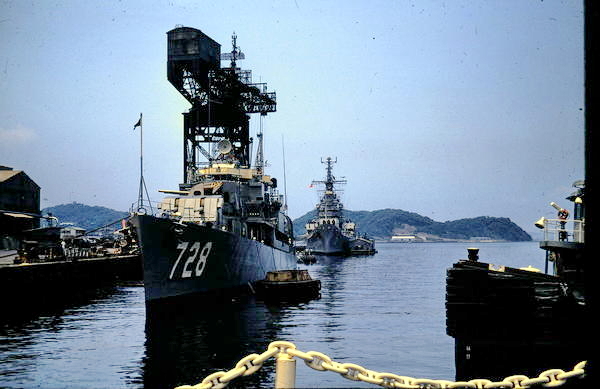
Two people had the most influence on the path I would follow in the Navy. As an ETN3 in 1966, I worked on an R-390A HF receiver in the ET shop on my first ship, the USS MANSFIELD (DD-728). The shop had a split door, and I had the top half open. A Master Chief (I can’t remember his name) walked by the shop and asked me what I was doing. I told him I was cleaning the pins on a vacuum tube because when I moved it in its socket, the receiver would work or stop working. He said, “Dirty pins aren’t the problem. There’s a burned resistor on pin seven, and when you move the tube one way, the two burnt ends make contact, and the receiver works. Replace the resistor with a higher wattage, and it’ll be okay.” To do this, I had to remove the RF amplifier, which was loaded with gears, which was not an easy job.
After I tried the tube pin cleaning, which didn’t work, I went ahead and pulled the amp. He was right, and there was the burnt resistor. I replaced it, and the receiver worked well. I told my ET1 about this and asked who the Master Chief was. He told me the ETCM was with MOTU-7 in Yokosuka (our home port at the time). Since I also worked on the UHF transmitters and receivers, the ET1 set me up to take one of the TED UHF transmitters to MOTU (Mobile Technical Unit) to learn how to align it. There, I met the second person who would influence me. Jack Bailey was a crusty old civilian with Philco-Ford who had come to Japan with the occupation in 1945. Jack took me in hand and showed me all the tricks to align the transmitter and its companion receiver.
After that, I knew I wanted to be a MOTU Tech, and twelve years later, after making Chief, I got my orders to MOTU-7. I retired from active duty there and continued working at MOTU as a civilian until 1995. The job satisfaction was terrific.
List the names of old friends you served with, at which locations, and recount what you remember most about them. Indicate those you are already in touch with and those you would like to make contact with.
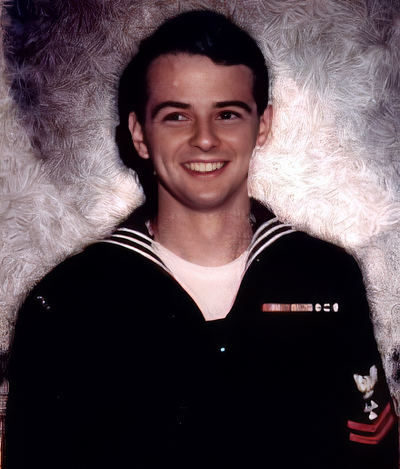
Having been on six ships and MOTU (sea duty) plus one shore duty (NAVCOMMSTA HONO) in my twenty years of active duty, the names of the shipmates I knew and went steaming with could fill a phone book (if they still had them). One name that stands out is MM2 Richard Archer KIA onboard USS MANSFIELD DD-728 near Dong Hoi, Viet Nam.
Can you recount a particular incident from your service which may or may not have been funny at the time but still makes you laugh?
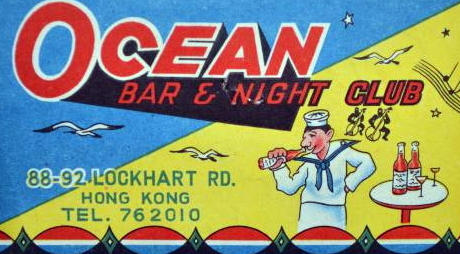
Many funny experiences. But remembering the OI division party in the Ocean Bar in the Wanchai in Hong Kong has to be one of the best. OI division consisted of Radarmen (RD) and ETs, and since all the senior petty officers were Radarmen (now called OS), the ETs were always on the short end of the stick. The party was primarily an RD affair, but a few of us ETs stopped in for a little while. On the streets of Hong Kong, young children walked around trying to sell things to the kindhearted American sailors. Well, someone at the party bought a toy plastic hammer that squeaked when you hit it. He came into the bar and started bopping people on the head with it. It was soft and didn’t hurt, and it was fun. Soon, we were all armed to the teeth with these hammers, and the kids outside were making a mint. After 15 or 20 bops, the thing would break, and out we’d go for more. This continued for several hours until we ran Hong Kong out of plastic hammers. The more intoxicated of our shipmates left while several of us stayed to help the Mama-San clean up all the broken plastic. She was good-natured about it. I think she realized we’d helped several children out and had fun doing it.
Another outstanding memory is qualifying for Navy Expert Pistol with an Armory 45. I was at the COMMSTA Honolulu, and every day at lunchtime, many of us would go out to the range for target practice. A civilian friend who had been in the Army told me the trick to getting a good score with an armory pistol was to try and get the same serial number every day. I did, and apparently, the base Dentist did, too, as we both were scoring really high in practice. I came the day for quals, and I had a morning dental appointment. He loaded me up with Novocaine to make sure I “didn’t feel any pain.” And I didn’t. I felt pretty good when I got to the range, even though my feet had difficulty staying on the ground. After the shoot was finished, I had outscored the Dentist, though we both qualified as Experts. His liberal application of the anesthetic didn’t affect my shooting and may have helped it.
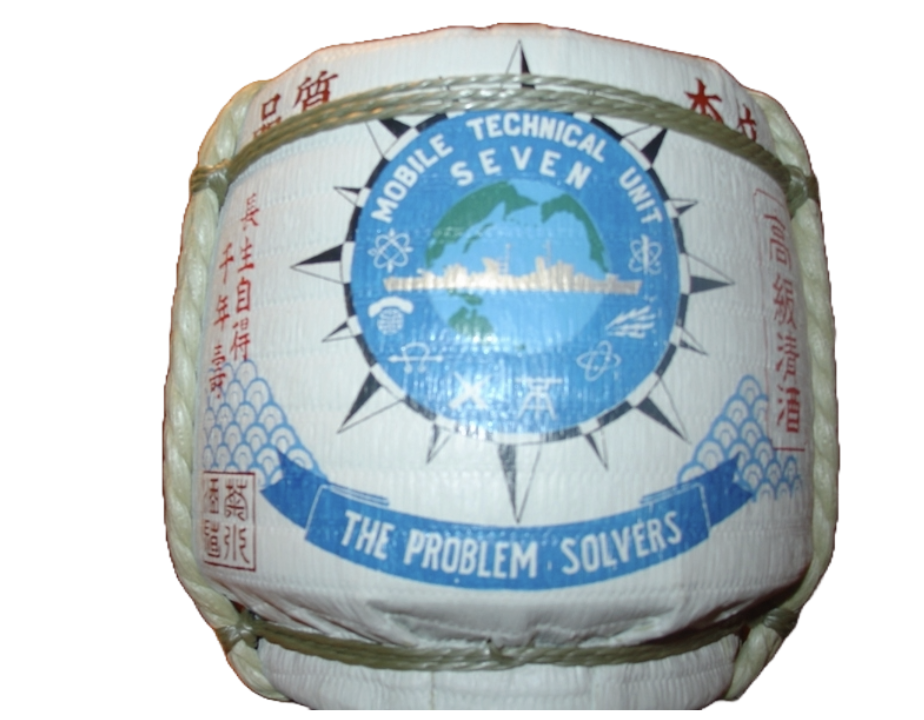
After I got to MOTU-7, I was sent to SRN-15 TACAN school in San Diego. I got there on a Saturday and checked in. I walked over to the 32nd Street Navy Base on Sunday to see what ships were in port. They were mostly SPRUANCE class destroyers, many of which I had already worked on. On Monday, I went to class. There were six ETSA or SNs in the class besides myself, so the instructor (an ET2) had us introduce ourselves. I explained what a MOTU was, and then each classmate stood up and introduced himself. The problem was each of them was going to a SPRUANCE destroyer.
The TACAN on that class of ship was the AN/URN-20, a much larger and more powerful TACAN. My classmates would be learning something that was of no use to them. I told them that each of their ships was important right now, and during lunch, they should go over to their ship, introduce themselves, and ask to speak to the EMO, ETC. “Tell him what class you’re in.” I came back to the school after lunch, and there in the foyer were my six classmates with a Chief or Warrant alongside them. I went to the classroom, and the instructor came in a little while later and said, “Well, Chief, I guess you have the class all to yourself. The other guys all transferred to other classes”. I had figured that would happen, and I had faith in my fellow Chiefs and Warrants that they wouldn’t waste a chance to get their new Tech some useful training. I finished the two-week course in one week and sat in on another class for the second week. Efficiency!
Another good story about that Tech assist on USS LEAHY (CG-16). After finishing my Tech assist on Christmas Eve, I was looking forward to taking the day off and eating Christmas dinner in the ship’s CPO Mess. Before the dinner was served, the bridge got on the 1MC and passed the word for flight quarters and for me to lay to the fantail (the ship didn’t have a flight deck) for transfer. The helo brought Christmas mail for the crew, so that was good, and lifted me off (horse collar). After one or two more deliveries, we went to the RANGER, where I’d spend the rest of Christmas day. I checked in and went to eat. By the time I got there, though, Christmas dinner was over. The mess cook offered me what was left: a few scraps of turkey, not even enough to make a sandwich, or he could make me a cheeseburger. Since the plan was to help me get to Mombasa the next day, I took the cheeseburger. It was pretty good.
What profession did you follow after your military service, and what are you doing now? If you are currently serving, what is your present occupational specialty?

I kept on doing what I had done best in the Navy: fixing the ship’s electronic equipment. I stayed at MOTU-7 after retiring and worked first on shipboard antennas and EMI (Electro-Magnetic Interference) problems and then moved over to NAVAIDS (LORAN, OMEGA, SATNAV (transit and GPS) and mostly TACAN).
Eventually, in 1995, a position opened up at SPAWAR (NISEWEST at the time), doing GPS equipment installs and tests onboard ships homeported in Yokosuka.
I retired in 2018 but live just outside the Yokosuka Navy Base and go on board two or three times a week.
What military associations are you a member of, if any? What specific benefits do you derive from your memberships?

I’ve joined several groups besides TWS. I don’t socialize much, though, and mainly joined to help support them. I’m in the VFW but have never been to the local post. I’m in the Tin Can Sailors Association (a great quarterly newspaper).
Also, the Historic Naval Ships Association, the USS OKLAHOMA CITY (CG-5, my last regular ship), the USS RICHARD C. EDWARDS (DD-950), and USS MANSFIELD (DD-728) associations.
In what ways has serving in the military influenced the way you have approached your life and your career? What do you miss most about your time in the service?
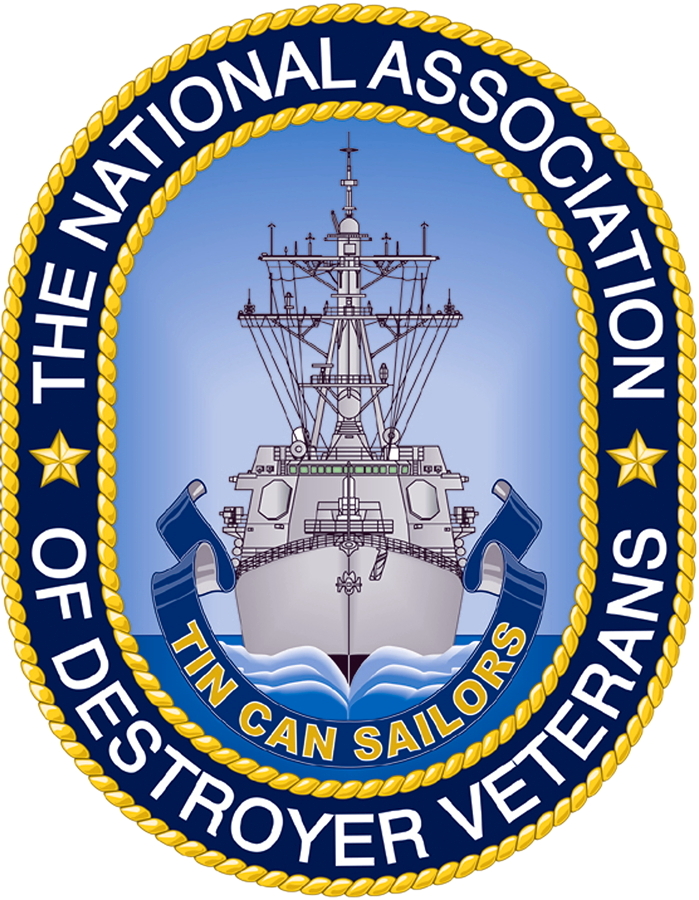
I suppose discipline and learning to focus on the problem at hand have influenced me the most. Living in the Western Pacific (off and on since 1966) has broadened my mind into accepting people for the content of their character rather than the color of their skin (to paraphrase Doctor King). And there have always been the shipmates. As far as I’m concerned, they are the finest people in the world. I guess I’d have to say I miss the camaraderie I had with sailors in general and shipmates in particular. But the memories are still there when I need them.
Based on your own experiences, what advice would you give to those who have recently joined the Navy?
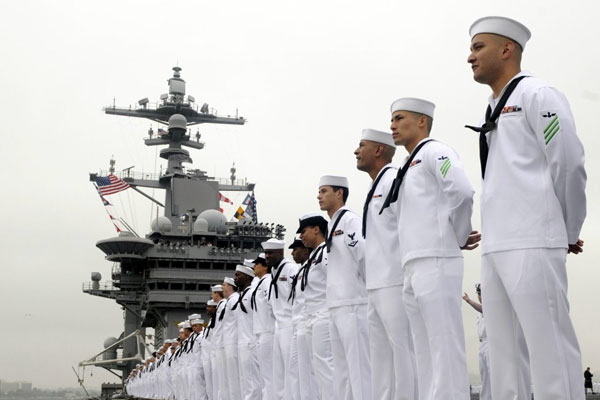
I’ve always been good at giving advice, and I would recommend that today’s sailors get their faces out of their iPhones and look around them. The Navy has given you an excellent chance to learn about other people and their ways of life. Others have mentioned the great opportunities in schooling and training that the Navy provides, but that is only part of your education.
Visiting countries you usually wouldn’t get to see and meet people is an opportunity that shouldn’t be missed. I made it a habit of learning how to say “thank you” in the language of the country I was visiting.
When kindness was shown to me, I used that phrase, and no matter how badly I pronounced it, it brought out warm, friendly smiles, and we enjoyed each other’s company. Try it. If you’re on a ship that has a COMREL (Community Relations) program where you can go to a local hospital or orphanage and help fix the place up, join in. Even if all you can do is play with the children in an orphanage, you will have done a wonderful thing, and both you and they will remember it all your lives.
In what ways has togetherweserved.com helped you remember your military service and the friends you served with.
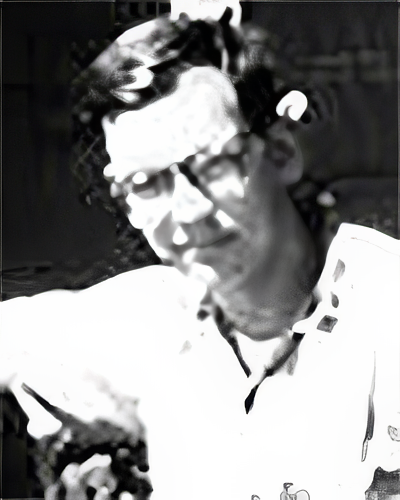
Mostly by reading others’ recollections of their time in service. I get those “hey, I was there too” or I remember when that happened” moments. I enjoy reading history, and reading these recollections is reading history.
To me, that’s the real value of TWS. Others want to connect with old friends and former shipmates, and that’s fine. I’d be happy for that experience, but I do enjoy reading recollections and experiences from everyone, including those I’ve never met.
Keep up the excellent work.
PRESERVE YOUR OWN SERVICE MEMORIES!
Boot Camp, Units, Combat Operations
Join Togetherweserved.com to Create a Legacy of Your Service
U.S. Marine Corps, U.S. Navy, U.S. Air Force, U.S. Army, U.S. Coast Guard

0 Comments